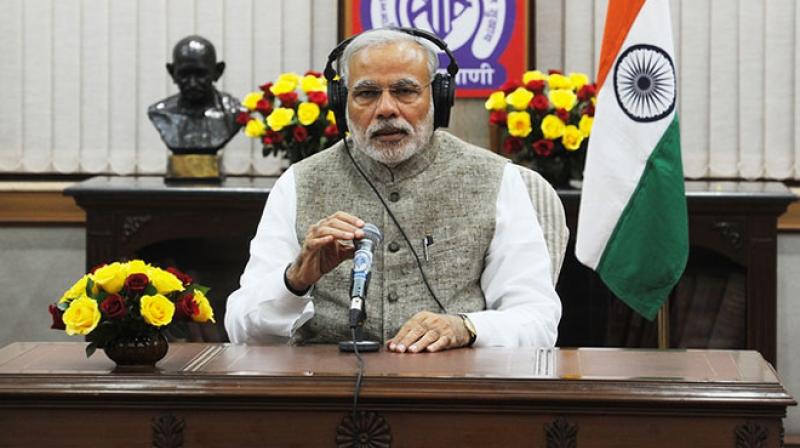CURRENT AFFAIRS FOR IBPS PO & RRB:SEPTEMBER 6,2017
Want to Become a Bank, Central / State Govt Officer in 2020?
Join the Most awarded Coaching Institute & Get your Dream Job


Now Prepare for Bank, SSC Exams from Home. Join Online Coure @ lowest fee
Lifetime validity Bank Exam Coaching | Bank PO / Clerk Coaching | Bank SO Exam Coaching | All-in-One SSC Exam Coaching | RRB Railway Exam Coaching | TNPSC Exam Coaching | KPSC Exam Coaching
CURRENT AFFAIRS FOR IBPS PO & RRB:SEPTEMBER 5,2017
NATIONAL
India slides in world university rankings:

Poor performance in internationalisation of their campuses and a low research score have pulled down Indian higher education institutes such as the Indian Institute of Science (IISc) and some of the Indian Institutes of Technology (IITs) in the Times Higher Education (THE) World University Rankings 2018.
While IISc has dropped from the 201-250 band in the previous rankings to the 251-300 band, IIT-Delhi and IIT-Kanpur have fallen from the 401-500 band to the 501-600 band. IIT-Madras fell from the 401-500 band to the 601-800 cohort. THE published the 14th annual edition of its World University Rankings, a list of the top 1,000 universities from 77 countries. According to THE, India’s performance has deteriorated, with its number of universities in the top 1,000 declining from 31 to 30.
The University of Oxford retains first place in the World University Rankings. The University of Cambridge climbs two places to second, overtaking the California Institute of Technology and Stanford University, both joint third. While the US continues to dominate the rankings, Chinese universities are climbing rapidly.
Additional information on Times Higher Education World University Ranking:
Times Higher Education World University Rankings is an annual publication of university rankings by Times Higher Education (THE) magazine. The publisher had collaborated with Quacquarelli Symonds (QS) to publish the joint THE–QS World University Rankings from 2004 to 2009 before it turned to Thomson Reuters for a new ranking system.
The publication now comprises the world’s overall, subject, and reputation rankings, alongside three regional league tables, Asia, Latin America and BRICS & Emerging Economies which are generated by consistent methodology.
The creation of the original Times Higher Education-QS World University Rankings was credited in Ben Wildavsky’s book, The Great Brain Race: How Global Universities are Reshaping the World, to then-editor of Times Higher Education, John O’Leary.
NITI Aayog launches National Nutrition Strategy:

NITI Aayog has launched the National Nutrition Strategy aimed at Kuposhan Mukt Bharat which linked to Swachh Bharat and Swasth Bharat. It intends at bringing nutrition to the centre-stage of the National Development Agenda. It aims to attain optimal nutritional status by 2022.
Leader of the Green Revolution, Dr M S Swaminathan and Vice Chairman of NITI Aayog Dr Rajiv Kumar launched the Nutrition Strategy in New Delhi. Our correspondent reports that the nutrition strategy calls for convergence between four proximate determinants of nutrition – food, health services, income and water.
About NITI Aayog:
NITI Aayog also known by the acronym the National Institution for Transforming India, is a Government of India policy think-tank established by the BJP government to replace the Planning Commission which followed the top-down model.
The stated aim for NITI Aayog’s creation is to foster involvement and participation in the economic policy-making process by the State Governments of India. The emphasis is on bottom-up approach and makes the country to move towards cooperative federalism. NITI Aayog Headquarters is located in New Delhi.
On 29 May 2014, the Independent Evaluation Office submitted an assessment report to Prime Minister Modi with the recommendation to replace the Planning Commission with a “control commission”. On 13 August 2014, the Union Cabinet scrapped the Planning Commission, to be replaced with a diluted version of the National Advisory Council (NAC) of India. The Union Government of India announced the formation of NITI Aayog on 1 January 2015, and the first meeting was held on 8 February 2015.
Additional information on NITI Aayog:
The NITI Aayog comprises the following:
- The Prime Minister as the Chairperson.
- A Governing Council composed of Chief Ministers of all the States and Union territories with Legislatures and lieutenant governor of Andaman and Nicobar.
- Regional Councils composed of Chief Ministers of States and Lt. Governors of Union Territories in the region to address specific issues and contingencies impacting more than one state or a region.
- Full-time organizational framework composed of a Vice-Chairperson, three full-time members, two part-time members (from leading universities, research organizations and other relevant institutions in an ex-officio capacity), four ex-officio members of the Union Council of Ministers, a Chief Executive Officer (with the rank of Secretary to the Government of India) who looks after administration, and a secretariat.
- Experts and specialists in various fields.
The NITI Aayog committee consists of
- Chairperson: Narendra Modi
- Vice Chairperson: Rajiv Kumar
- Ex-Officio Members: Rajnath Singh, Arun Jaitley, Suresh Prabhu and Radha Mohan Singh
- Special Invitees: Nitin Gadkari, Smriti Zubin Irani and Thawar Chand Gehlot
- Full-time Members: Bibek Debroy (Economist), V K Saraswat (former DRDO Chief), Ramesh Chand (Agriculture Expert) and Dr. Vinod Paul (Public Health expert)
- Chief Executive Officer (CEO): Amitabh Kant
- Governing Council: All Chief Ministers of States (and Delhi and Puducherry) and Lieutenant Governors of remaining Union Territories.
Record Sugar output in UP likely in 2017-18

Uttar Pradesh is reportedly heading for a new record of sugar production for the 2017-18 crushing season, which begins next month.
A recent study from rating agency ICRA estimated the state’s sugar production to stand at 9.7 million tonnes (mt) in the upcoming season this year. Meanwhile, data compiled by the All India Sugar Trade Association pegged the state’s sugar output at 8.7 mt during 2016-17. This indicates mills in UP would produce 11.5 per cent more sugar in the coming season or nearly four times the state’s own consumption.
Indian Sugar Mills Association (Director General): Abinash Verma
About ICRA:
ICRA Limited (ICRA) is an Indian independent and professional investment information and credit rating agency. It was established in 1991, and was originally named Investment Information and Credit Rating Agency of India Limited (IICRA India).
It was a joint-venture between Moody’s and various Indian commercial banks and financial services companies. The company changed its name to ICRA Limited, and went public on 13 April 2007, with a listing on the Bombay Stock Exchange and the National Stock Exchange.
There are six subsidiary of ICRA Ltd. as,
- PT. ICRA Indonesia (ICRAIndo)
- ICRA Lanka Limited (ICRALanka)
- ICRA Nepal Limited (ICRA NEPAL)
- ICRA Techno Analytics Limited (ICTEAS)
- ICRA Online Limited (ICRON)
- IMaCs (ICRA Management Consulting Services Limited)
Managing Director& CEO: Naresh Takkar
Headquarters: Gurgaon, India
3,500 state, central schemes worth Rs 6 lakh cr to come under DBT soon:

More number of central government schemes under Direct Benefit Transfer (DBT), the Narendra Modi administration has instructed the states to ensure that they pass their own DBT laws and create their own portals to bring in their schemes under the DBT umbrella.
Some 3,500 central and state government schemes and programmes, with a total outlay of Rs 6 lakh crore, are expected to be brought under the DBT mission. Out of these, 3,000 schemes and programmes are expected to be from the states, while 500 are central schemes.
The deadline for bringing those 500 schemes under DBT is December 2017. There is no fixed deadline for the states to bring in their schemes under their own DBT portals, though senior government said that the exercise could be completed by 2019. Out of Rs 6 lakh crore, Rs 3 lakh crore is for the central schemes and the rest is for states’ schemes. Then the states will either bring a state DBT Act or an executive order under section 57 of the Aadhaar Act.
About Direct Benefit Transfer Scheme:
Direct Benefit Transfer or DBT is an attempt to change the mechanism of transferring subsidies launched by Government of India on 1 January 2013. It is launched by Former Union Minister for Rural Development of India Jairam Ramesh and former Chief Minister of Andhra Pradesh N. Kiran Kumar Reddy inaugurated the scheme at Gollaprolu in East Godavari district.
This program aims to transfer subsidies directly to the people through their bank accounts. It is hoped that crediting subsidies into bank accounts will reduce leakages, delays, etc. It was launched in 20 districts, covering scholarships and social security pensions initially.
The primary aim of this Direct Benefit Transfer program is to bring transparency and terminate pilferage from distribution of funds sponsored by Central Government of India. Central Plan Scheme Monitoring System (CPSMS), being implemented by the Office of Controller General of Accounts, will act as the common platform for routing DBT. In April 2013 the government decided to extend the DBT scheme in 78 more districts of the country from July 1, 2013.
A Number of schemes monitored under DBT were initially 27 which has increased up to 140 in March 2017. Till March 2017, Rs.1,82,671.36 Crore has been disbursed to 35.7 Crore Beneficiaries.
The scheme wise details of Beneficiaries, and DBT transactions under Aadhaar Payment Bridge (APB) & other electronic modes from 1st January 2013 till 31st March 2017 is given below:
DBT Schemes are categorised as:
1) MGNREGS (Rural Employment)
2) NSAP (Includes Old Age Pension, Widow Pension & Disability Pension)
3) PAHAL (LPG Subsidy)
4) Scholarship Schemes (Scholarship & Fellowship Schemes) and
5) Others (all remaining schemes)
INTERNATIONAL
India, Egypt to bolster bilateral ties:
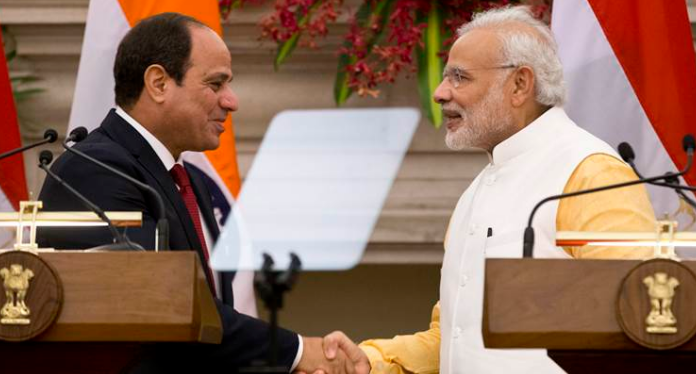
Prime Minister Narendra Modi met Egyptian President Abdel Fattah el-Sisi and held talks on ways to strengthen bilateral ties.
Earlier, during his address at the BRICS Emerging Markets and Developing Countries Dialogue, which was attended by Egypt, Mexico, Guinea, Thailand and Tajikistan on China’s invitation as part of “BRICS Plus” outreach exercise, Mr. Modi described these countries as “close and valued” partners of India.
India and Egypt have a strong economic relationship and cooperation in areas of security and counter-terrorism. India is the sixth largest trading partner of Egypt. India’s imports from Egypt were worth $1.74 billion during the 2014-15.
Additional information on India-Egypt Bilateral ties:
Egypt has traditionally been one of India’s most important trading partners in the African continent.
The India-Egypt Bilateral Trade Agreement has been in operation since March 1978 and is based on the Most Favoured Nation clause.
Trade between India and Egypt during the last financial year (April 2015 – March 2016) was US$ 3.5 billion.
India is the ninth largest trading partner of Egypt – the seventh largest export destination and eleventh largest import source for Egypt. India’s imports from Egypt were worth US$ 1.2 billion during FY 2015-16.
Indian exports to Egypt during FY 2015-16 have been recorded at US$ 2.3 billion. The top five Indian exports during FY 2015-16 were meat, vehicles, cotton yarn, petroleum and parts of vehicles while the top five Indian imports were crude petroleum, rock phosphate, raw cotton, citrus fruit and fruit seeds.
China announces $80 million funding plan for BRICS:
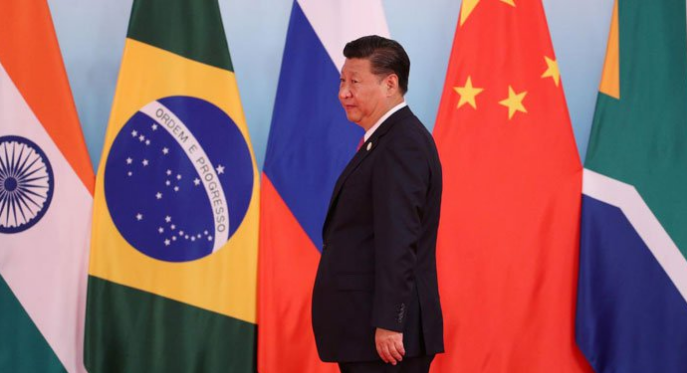
China will give 500 million Yuan ($76.4 million) for a BRICS economic and technology cooperation plan, and another $4 million for projects at the BRICS countries’ New Development Bank, Chinese President Xi Jinping.
The newly announced $80 million funding plan pales in comparison to China’s $124-billion pledge earlier in May in a push for Xi’s own Belt and Road initiative, which aims to expand links between Asia, Africa, Europe and beyond as a new way to boost global development.
The announcement came amid questions over the relevance of BRICS and China’s commitment to its New Development Bank (NDB) in light of the Belt and Road initiative and the China-led Asian Infrastructure Investment Bank.
Additional information on BRICS:
The acronym “BRICs” was initially formulated in 2001 by economist Jim O’Neill, of Goldman Sachs, in a report on growth prospects for the economies of Brazil, Russia, India and China – which together represented a significant share of the world’s production and population.
The First Summit, held in Yekaterinburg in 2009, the depth and scope of the dialogue among the Members of BRICs – which became BRICS in 2011 with the inclusion of South Africa – was further enhanced.
2013 – Member nations agree to create a new global financial institution with China committing $41 billion; India, Brazil and Russia committing $18 billion each and South Africa $5 billion towards the first pool for the new bank. The arrangements for this New Development Bank would be finalized by 2014.
Previous summits:
8 summits have taken place so far, with the first two as BRIC summits and the rest as BRICS summits.
1st BRIC Summit – 16 June 2009 in Yekaterinburg, Russia
2nd BRIC Summit – 16 April 2010 in Brasilia, Brazil
3rd BRICS Summit – 14 April 2011 in Sanya, China
4th BRICS Summit – 29 March 2012 in New Delhi, India
5th BRICS Summit – 26-27 March 2013 in Durban, South Africa
6th BRICS Summit – 14-16 July 2014 in Fortaleza, Brazil
7th BRICS Summit – 8-9 July 2015 in Ufa, Russia
8th BRICS Summit – 15-16 October in Banaulim, Goa
BANKING & BUSINESS
Centre asks banks to restrict accounts of 2.09 lakh firms:

The finance ministry has advised all banks to take immediate steps to restrict transactions in bank accounts of more than 2.09 lakh companies, whose names have been struck off the Register of Companies.
On July 1, Prime Minister Narendra Modi had first revealed the government’s decision to cancel the registrations of one lakh companies that had suspicious and questionable operations, identified on the basis of data mined from the deposit of bank notes following last November’s demonetisation of Rs.500 and Rs.1,000 notes.
The names of 2,09,032 companies have been struck off from the register of companies under Section 248 (5) of the Act. The Section 248 of the Companies Act, which is implemented by the corporate affairs ministry that provides powers to strike off names of companies from the register on various grounds including for being inactive for long.
According to the official, since these companies had ceased to be legal entities, there was no reason having active bank accounts which could be prone to misuse. 3 lakh registered companies are under the radar of suspicion. 37,000 shell firms engaged in hiding black money and hawala transactions have been identified. 163 listed companies were suspended from trading, pending submission of proof documents.
ICICI Lombard gets SEBI nod for IPO:
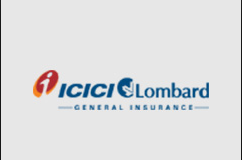
ICICI Lombard General Insurance Company has got SEBI’s go-ahead for its estimated Rs. 6,000 crore IPO, which could be the first by a general insurer in the country.
Two State-run general insurers –General Insurance Corp of India and New India Assurance Company – as also two life insurance firms (SBI Life and HDFC Standard Life) have also lined up IPO plans and are awaiting SEBI’s go-ahead for their respective draft papers.
SEBI had sought clarification from IRDAI regarding General Insurance Corp (GIC) on August 21 and about New India Assurance Co Ltd on August 16 and about HDFC Standard Life on August 23rd. In July, SBI Life Insurance Company and ICICI Lombard General Insurance Company had approached Securities and Exchange Board of India (SEBI) with their respective IPO papers.
About ICICI Lombard:
ICICI Lombard General Insurance Company Limited is one of the leading private sector general insurance companies in India. It is engaged in general insurance, reinsurance, insurance claims management and investment management. ICICI Lombard is a joint venture between ICICI Bank and Canada-based Fairfax Financial Holdings Ltd (Toronto). ICICI bank had 64% stake in the venture while Fairfax had 35% in the joint venture. ICICI Lombard General Insurance is the largest private sector general insurance company in India.
Headquarters of ICICI Lombard is located in Mumbai.
MD & CEO: Mr. Bhargav Dasgupta
ABOUT IPO:
An Initial Public Offering (IPO) is the first time that the stock of a private company is offered to the public. IPOs are often issued by smaller, younger companies seeking capital to expand, but they can also be done by large privately owned companies looking to become publicly traded. In an IPO, the issuer obtains the assistance of an underwriting firm, which helps determine what type of security to issue, the best offering price, the amount of shares to be issued and the time to bring it to market.
Additional information on SEBI:
The Securities and Exchange Board of India (SEBI) is the regulator for the securities market in India. It was established in the year 1988 and given statutory powers on 30 January 1992 through the SEBI Act, 1992.
It became an autonomous body by The Government of India on 12 April 1992 and given statutory powers in 1992 with SEBI Act 1992 being passed by the Indian Parliament.
SEBI Headquarters: Mumbai, Maharashtra
RBI restricts FIIs from buying shares in Bharat Financial:

The Reserve Bank has restricted foreign investors from buying more shares in non-banking finance company Bharat Financial Inclusion after the allowed investment limit reached the ceiling.
The RBI said foreign shareholding in the company through foreign institutional investors (FIIs)/foreign portfolio investors (FPIs) has reached trigger limit in Bharat Financial Inclusion. FIIs, NRIs and PIOs (Persons of Indian Origins) can invest in primary and secondary capital markets in India through portfolio investors scheme (PIS). The RBI monitors ceilings on FII/NRI/PIO investments in Indian companies on a daily basis.
Additional information on Bharat Financial Inclusion Limited:
Bharat Financial Inclusion Limited (formerly known as SKS Microfinance Limited) BFIL is a non-banking finance company (NBFC), licensed by the Reserve Bank of India. It was founded in 1997 by Vikram Akula, who served as its executive chair until November 2011.
The company’s mission is to provide financial services to the poor under the premise that providing financial services to poor borrowers helps to alleviate poverty. In 2013, the company operated across 17 Indian states.
Headquarters: Hyderabad, India
BHIM app to be single point for all mobile payments:

The ministry of electronics and IT (MeitY) is working on a multi-pronged strategy under which it plans to make the Bharat Interface for Money app, or BHIM, the single point for all mobile payments. This plan includes handsets coming pre-loaded with the application as well as having a single quick response (QR) code that will be integrated with the app and is accepted by all merchants, in a bid to enable a seamless nationwide network.
Additional information on BHIM App:
BHIM (Bharat Interface for Money) is a Mobile App developed by National Payments Corporation of India (NPCI), based on the Unified Payment Interface (UPI). It was launched by Narendra Modi, the Prime Minister of India, at a Digi Dhan mela at Talkatora Stadium in New Delhi on 30 December 2016.
It has been named after Dr. Bhimrao R. Ambedkar and is intended to facilitate e-payments directly through banks and as part of the 2016 Indian banknote demonetisation and drive towards cashless transactions. If the 12-digit Aadhaar number is listed as a payment ID, the BHIM app will not require any biometric authentication or prior registration with the bank or Unified Payment Interface (UPI).
The app supports all Indian banks which use that platform, which is built over the Immediate Payment Service infrastructure and allows the user to instantly transfer money between the bank accounts of any two parties.
It can be used on all mobile devices. BHIM allow users to send or receive money to or from UPI payment addresses, or to non-UPI based accounts (by scanning a QR code with account number and IFSC code or MMID (Mobile Money Identifier) Code). Unlike mobile wallets (PayTM, MobiKwik, mPesa, Airtel Money etc) which hold money, the BHIM app is only a transfer mechanism, which transfers money between different bank accounts. Transactions on BHIM are nearly instantaneous and can be done 24/7 including weekends and bank holidays.
Transactions Limits:
At present, there is no charge for transaction from Rs.1 to Rs.1 Lakh. If a debit card with a daily transaction limit is linked to the BHIM app (usually Rs 10,000 or Rs 20,000 for many no-frills accounts), transfers through the BHIM app are also subject to the same limit. Debit card limits can be changed by the issuing bank.
Language Access:
BHIM app currently supports 12 languages (including English), though there are totally 22 of the official languages of India (excluding English) under 8th Schedule of Constitution of India. In near future BHIM app is expected to support all 22 official languages of India along with other regional languages which were spoken widely next to the scheduled languages. But Available languages are Bengali, Odia, Gujarati, Kannada, Malayalam, Tamil and Telugu, Hindi and English.
Usage:
During the Union Budget 2017, Union Finance minister Arun Jaitley said that BHIM is currently being used by over 125 lakh Indian citizens. The Government will launch two new schemes to promote the use of the BHIM app. One will be referral payments for individuals, and the other will cash back for merchants who accept payments from BHIM.
Disadvantages:
The BHIM app has some issues – for instance it does not yet work with the IRCTC app.
IFC invests $10 million in Power2SME:
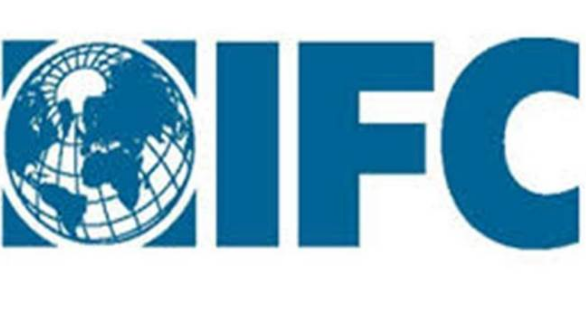
IFC, a member of the World Bank Group, has invested$10 million as equity in Power2SME, an e-commerce platform that helps small and medium companies buy raw materials at bulk prices and get working capital without collateral.
In addition to the investment, IFC will also advise Power2SME to help it expand beyond the 14 states it currently operates in, improve its ability to provide working capital to SMEs by adding more banks as partners, and increase the number of users on its platforms by up to 10 times in five years.
Power2SME is backed by venture capital firms such as Kalaari Capital, Accel Partners, and Inventus Capital. Nandan Nilekani joined it as a strategic advisor through his investment in late 2015.
About IFC:
The International Finance Corporation (IFC) is an international financial institution that offers investment, advisory, and asset-management services to encourage private-sector development in developing countries.
The IFC is a member of the World Bank Group and is headquartered in Washington, DC. It was established in 1956, as the private-sector arm of the World Bank Group, to advance economic development by investing in for-profit and commercial projects for poverty reduction and promoting development. The IFC prepares consolidated financial statements in accordance with United States GAAP which are audited by KPMG.
President: Jim Yong Kim
CEO: Philippe Le Houerou
Reliance General Insurance gets IRDAI nod for IPO:

Reliance General Insurance said it has received in-principle approval from the Insurance Regulatory and Development Authority of India (IRDAI) for its initial public offering (IPO).
The insurance firm, which is a 100 per cent subsidiary of Reliance Capital, is expected to list during the ongoing fiscal. Reliance Capital plans to dilute about 25 per cent of its holding in the insurer.
The insurer is a participant in various government crop insurance schemes including Pradhan Mantri Fasal Bima Yojana. Currently, ICICI Prudential Life is listed on the stock exchange, while Max Life insurance is indirectly listed through holding company Max Financial Venture. At the same time, many other insurers such as HDFC Standard Life and SBI Life Insurance have also announced their plans for IPOs.
Additional information on Reliance General Insurance:
Reliance General Insurance was incorporated on 17 August 2000. It received the license to conduct general insurance business in India from the Insurance Regulatory Development Authority of India (IRDAI) on 23 October 2000. Unlike most insurance companies, who have foreign partners, the firm is promoted solely by Reliance Capital.
Reliance General Insurance offers insurance services across the domains of motor, health, travel and home. The commercial insurance services include commercial vehicle, office and marine.
Reliance General Insurance was awarded as India’s first insurance company to get an ISO 9001:2008 certification for end-to-end services of general insurance product offerings across India. It won the “General Insurance company of the year” award at the Indian Insurance Awards in 2015. In 2016, the company received ET Best BFSI Brands.
Founder: Anil Ambani and Dhirubhai Ambani
Headquarters: Mumbai, Maharashtra
APPOINTMENTS
France appoints envoy to mediate between Qatar and Arab States:

France’s Foreign Ministry said that it picked its former Ambassador to Saudi Arabia as a Special Envoy to see how Paris could support mediation efforts in the rift between Qatar and several of its neighbours.
Kuwait’s Emir Sheikh Sabah al-Ahmad al-Jaber has led mediation efforts to resolve the row, which began in early June when Saudi Arabia, Bahrain, the United Arab Emirates and Egypt cut political and trade ties with Qatar.
Shri Rao Inderjit Singh Takes Over As Minister of State for Chemicals and Fertilizers:

Shri Rao Inderjit Singh took over as the Minister of State for Chemicals and Fertilizers.
He now represents Gurgaon (Haryana) Parliamentary constituency in Lok Sabha. Shri Rao Inderjit Singh is also the Minister of State (Independent Charge), Ministry of Planning.
Sankara Narayanan takes charge as MD & CEO of Vijaya Bank:

R A Sankara Narayanan has taken charge as Managing Director and Chief Executive Officer of Vijaya Bank. He has taken over the reins of the bank from Kishore Sansi, who reached superannuation on August 31. Prior to this appointment he worked as Executive Director of Bank of India from May 2015
Additional information on Vijaya Bank:
Vijaya Bank was established by a group of farmers led by Shri Attavar Balakrishna Shetty on 23 October 1931 in Mangaluru in Dakshina Kannada District of Karnataka State. Since it was established on the auspicious Vijayadashami Day, it was named ‘Vijaya Bank’.
The present head office building of the Bank at Mahatma Gandhi Road, Bengaluru was inaugurated by the former President of India Shri Pranab Kumar Mukherjee on 26 October 1984.
Latest technology:
FreeBuzz: Missed Call Services to enable customers to know account balance easily.
V-GyanSagar: It is a unique initiative taken by Vijaya Bank to impart financial literacy to public. It is Android based mobile application that enables its subscribers to receive regular updates on banking and financial news. It provides explanation of banking terminologies.
V-Abacus: This initiative enables public to open a bank account by giving a missed call. Tablet Banking facility has been implemented.
V-QuickPay: It is unique next generation bill payment service where bill payment is made by scanning the QR code on the bill generated by the merchant. There is no need to swipe credit or debit cards. This is truly unique initiative taken by the Vijaya Bank.
V-Fee Hive: Bank’s in-house software development team has developed a unique application for collection of fees by educational institutions, collection of monthly maintenance charges by housing societies, collection of fees by clubs. This application was implemented in various prestigious institutions like IIM-Kozhikode, Mount Carmel College -Bangalore, Army Public School-Delhi, MSRIT Bangalore and Vasavi Pearl Appartment. It is a great step towards making cashless society.
V-eWallet: It is a unique secured small payment collection system designed using UNIQUE-pull technology.
UPI: Vijaya Bank has recently rolled out Unified Payment Interface (UPI) which is introduced by the RBI.
Shri Haribhai Parthibhai Chaudhary, MoS Coal & Mines, assumes charge in Ministry of Coal
Shri Haribhai Parthibhai Chaudhary assumed the charge of MoS Ministry of Coal at Shastri Bhawan.
Prior to this, Shri Chaudhary was Minister of State in Ministry of Micro, Small and Medium Enterprises (MSME). Earlier, he also served as Minister of State in Ministry of Home Affairs.
AWARDS
UNESCO announces winners of 2017 International Literacy Prizes:

The UN Educational, Scientific and Cultural Organization (UNESCO) has announced the winners of the 2017 International Literacy Prizes, which honours excellence and innovation in the field of global literacy.
The awards will be handed out to five laureates from Canada, Colombia, Jordan, Pakistan and South Africa on the occasion of International Literacy Day, the organisation said.
The prizes are divided into two categories, namely the UNESCO Confucius Prize for Literacy sponsored by China, and the King Sejong Literacy Prize sponsored by South Korea.
This year’s Confucius Prize, which rewards projects that benefit rural populations and out-of-school youth, particularly girls and women, is given to the AdulTICoProgram from Columbia, the Citizens Foundation from Pakistan, and the FunDza project from South Africa.
The King Sejong prize, dedicated to mother-tongue literacy education, is shared by the Centre for the Study of Learning and Performance from Canada and the We Love Reading programme from Jordan.
Additional information on UNESCO International Literacy Prices:
Since 1967, UNESCO International Literacy Prices have rewarded excellence and innovation in the field of literacy. Over 475 projects and programmes undertaken by governments, non-governmental organizations and individuals around the world have been recognized. Through these prestigious Prizes, UNESCO seeks to support effective literacy practices and encourages the promotion of dynamic literate societies.
Currently there are two UNESCO International Literacy Prizes:
The UNESCO King Sejong Literacy Prize (2 awards):
Established in 1989, with the support of the Government of the Republic of Korea. It gives special consideration to the development and use of mother-tongue literacy education and training.
The UNESCO Confucius Prize for Literacy (3 awards):
The UNESCO Confucius Prize for Literacy, established in 2005, with the support of the Government of the People’s Republic of China. It gives special consideration to literacy amongst adults in rural areas and out-of-school youth, particularly girls and women. Each of the five prizewinners receives a medal, a diploma and US$20,000.
The UNESCO International Literacy Prices are awarded in an official ceremony on the occasion of the International Literacy Day (8 September).
SPORTS
Amritpal Singh creates history, becomes first Indian to be signed by Australian basketball team:

The captain of the Indian basketball team, Amritpal Singh scripted history by becoming the first Indian-born player to be picked up by an Australian NBL team.
He had earlier been a part of the four-member Indian contingent of Amjyot Singh, Yadwinder Singh and Vishesh Bhriguvanshi, who had been a part of the National Basketball League (NBL) Draft Combine in Melbourne, Australia earlier this year. He was then invited by the Sydney Kings for the Atlas Challenge 2017 tournament in China.



